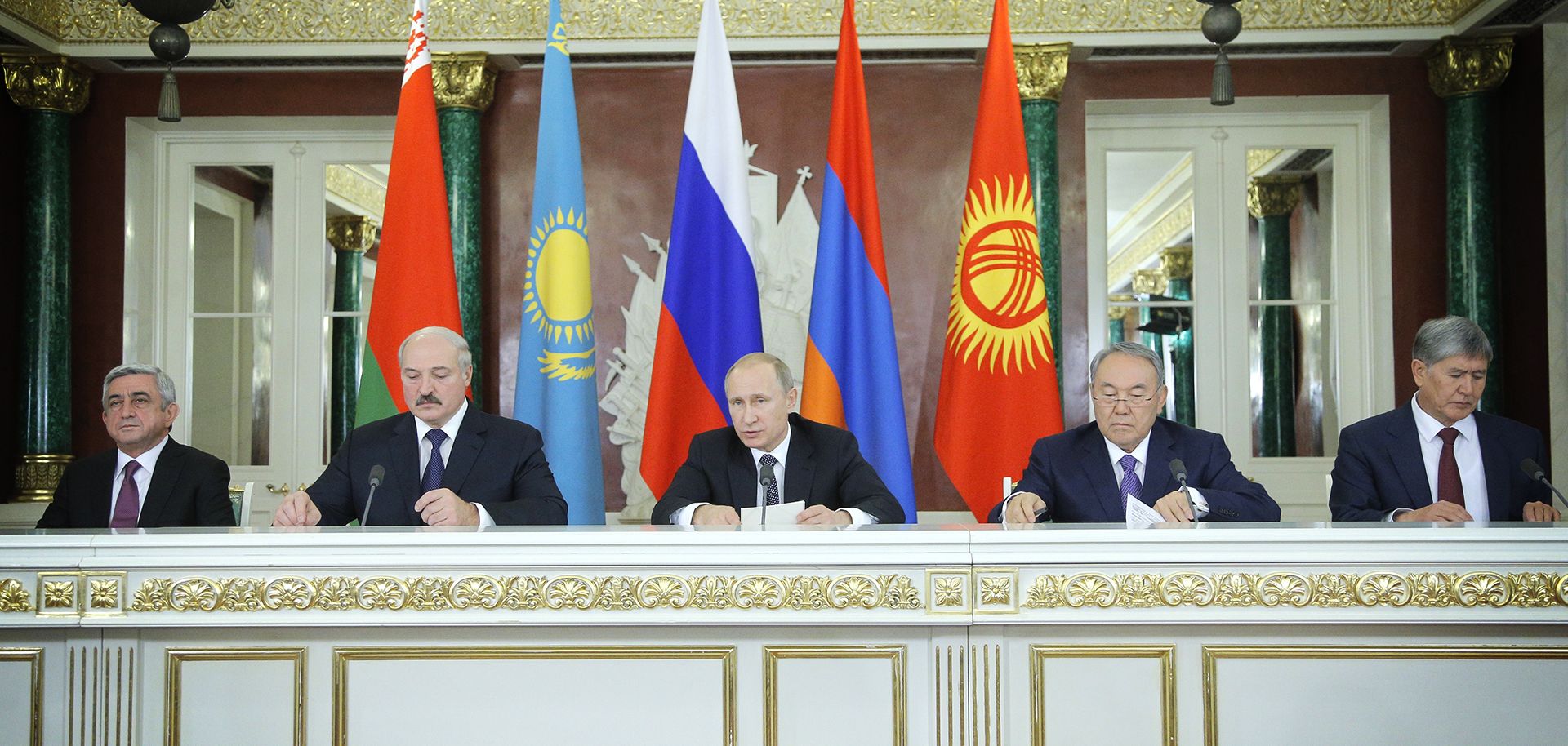ASSESSMENTS
The Tumultuous Birth of the Eurasian Economic Union
Dec 31, 2014 | 10:00 GMT

(MAXIM SHIPENKOV/AFP/Getty Images)
Summary
On Jan. 1, 2015, the Eurasian Economic Union will formally come into effect. The new economic bloc will include Russia, Kazakhstan, Belarus and Armenia, with Kyrgyzstan expected to join in May 2015. At its heart, the Eurasian Economic Union is part of Russia's attempt to create buffer zones in the former Soviet Union in which Russian influence is entrenched and other powers — particularly the West — are kept out. The Eurasian Economic Union was designed to boost Russia's economic ties and influence in the region.
The launch of the bloc was envisioned as the pinnacle of Eurasian economic integration and growth. However, the long-planned economic group will come into being just as its new member countries begin facing the regional effects of Russia's ongoing economic troubles and as Russia's financial constraints threaten to limit its ability to give economic support to countries in its periphery. Although Russia could rebound economically, and the Eurasian Economic Union could ultimately provide tangible benefits to its member states, Russia's ongoing economic problems will have both political and economic repercussions for the bloc's members.
Subscribe Now
SubscribeAlready have an account?
